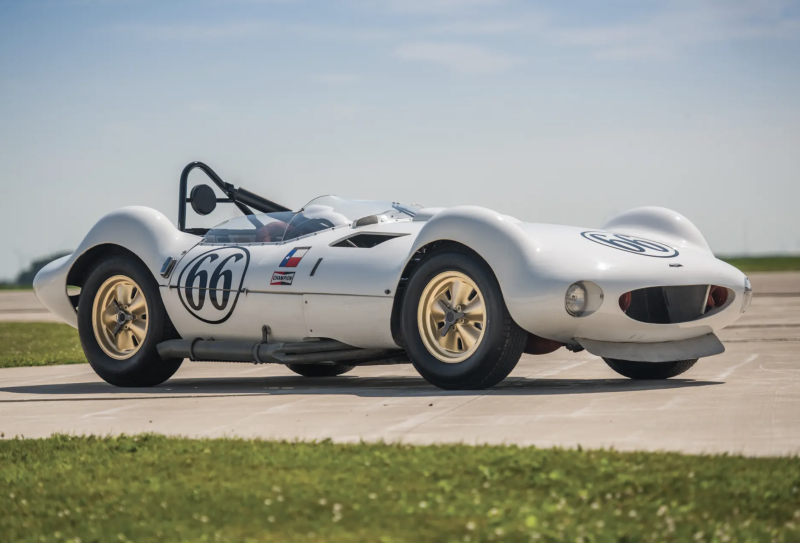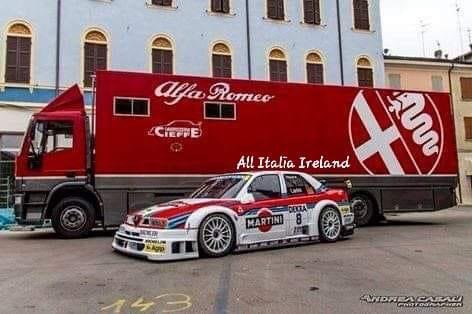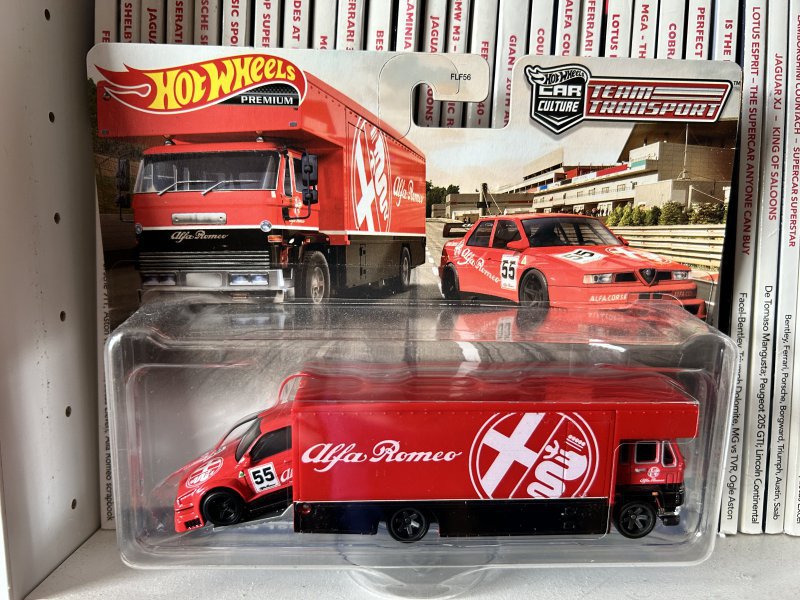You are using an out of date browser. It may not display this or other websites correctly.
You should upgrade or use an alternative browser.
You should upgrade or use an alternative browser.
Pic of the day
- Thread starter conaero
- Start date
philw696
Member
- Messages
- 25,491
The Tyrrell P34, a single seater with six wheels.
He raced in Formula 1 between 1976 and 1977 and had four smaller wheels in the front and two large wheels in the rear.
It was invented by the British engineer Derek Gardner, convinced that this type of layout would make the car more aerodynamic and stable in the curves.
However, the project, intended to make the Scuderia Tyrell more competitive against Ferrari, soon presented many defects, such as overheating of the tires and poor speed due to excessive sizing of the rear tires.
A few years later, the FIA (International Automobile Federation) imposed four wheels for racing.

He raced in Formula 1 between 1976 and 1977 and had four smaller wheels in the front and two large wheels in the rear.
It was invented by the British engineer Derek Gardner, convinced that this type of layout would make the car more aerodynamic and stable in the curves.
However, the project, intended to make the Scuderia Tyrell more competitive against Ferrari, soon presented many defects, such as overheating of the tires and poor speed due to excessive sizing of the rear tires.
A few years later, the FIA (International Automobile Federation) imposed four wheels for racing.
Phil H
Member
- Messages
- 4,171
Next month it can be yours:
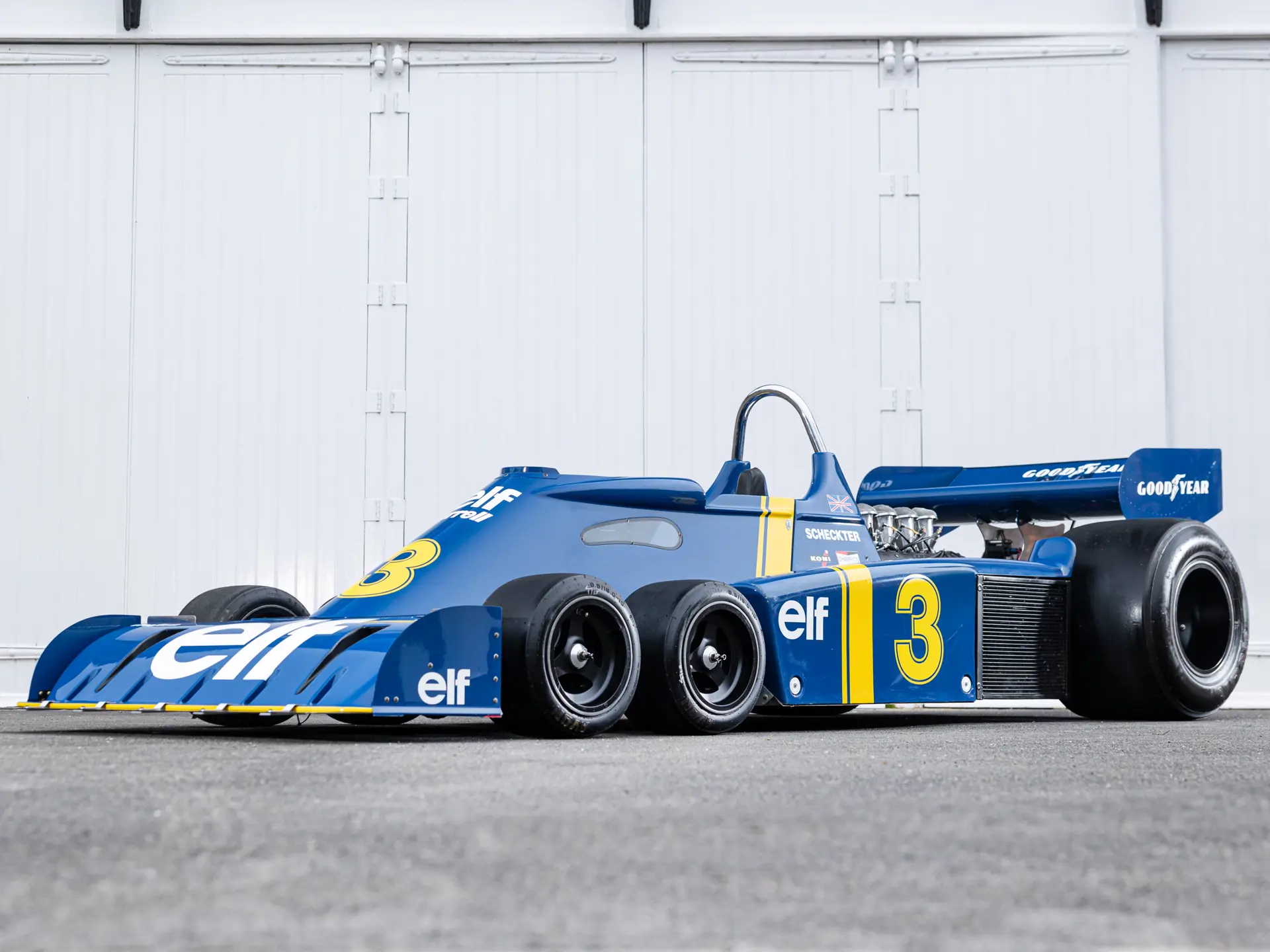

1977 Tyrrell P34 | Monaco | RM Sotheby's
1977 Tyrrell P34 for sale at RM Sotheby's Monaco
rmsothebys.com
lozcb
Member
- Messages
- 12,586
Remember it well Phil , I always imagined it was a flawed technology as the tyre scrub cornering must have been horrendous , for a while they seemed to do well thoughThe Tyrrell P34, a single seater with six wheels.View attachment 125485
He raced in Formula 1 between 1976 and 1977 and had four smaller wheels in the front and two large wheels in the rear.
It was invented by the British engineer Derek Gardner, convinced that this type of layout would make the car more aerodynamic and stable in the curves.
However, the project, intended to make the Scuderia Tyrell more competitive against Ferrari, soon presented many defects, such as overheating of the tires and poor speed due to excessive sizing of the rear tires.
A few years later, the FIA (International Automobile Federation) imposed four wheels for racing.
philw696
Member
- Messages
- 25,491
Same Humour as me Andy
zagatoes30
Member
- Messages
- 20,959
March also dabbled with the 6 wheel approach but a different concept, once again it failed but this was partly down to the lack of financial resources March had at that timeThe Tyrrell P34, a single seater with six wheels.View attachment 125485
He raced in Formula 1 between 1976 and 1977 and had four smaller wheels in the front and two large wheels in the rear.
It was invented by the British engineer Derek Gardner, convinced that this type of layout would make the car more aerodynamic and stable in the curves.
However, the project, intended to make the Scuderia Tyrell more competitive against Ferrari, soon presented many defects, such as overheating of the tires and poor speed due to excessive sizing of the rear tires.
A few years later, the FIA (International Automobile Federation) imposed four wheels for racing.
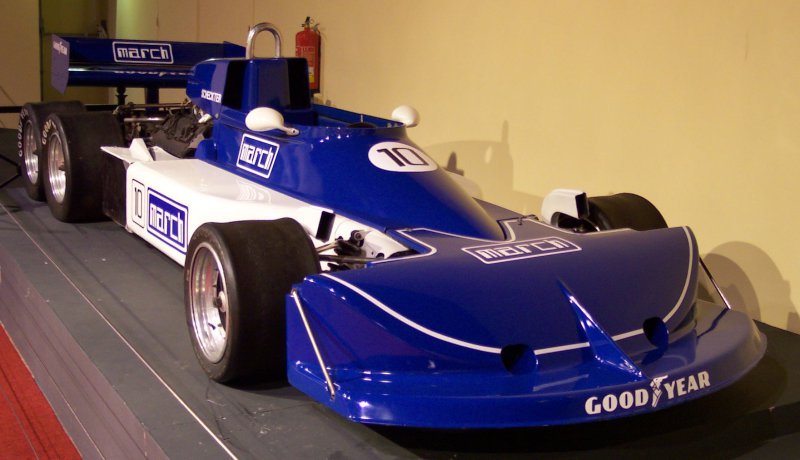
zagatoes30
Member
- Messages
- 20,959
joered
Member
- Messages
- 441
Ha! but does he own a soldering iron that is the question!I must confirm that I have never owned a MIG welder. Nor would I ever attempt such a thing and any rumours to contrary may be subject to legal proceedings!
C
philw696
Member
- Messages
- 25,491
I think Chris has some Nunchucks that might be coming my wayHa! but does he own a soldering iron that is the question!
CatmanV2
Member
- Messages
- 48,806
I think Chris has some Nunchucks that might be coming my way
Tsk! Nunchucks are a Japanese weapon
C
zagatoes30
Member
- Messages
- 20,959
Oneball
Member
- Messages
- 11,129
There’s something in the back of my mind that says the Martini 155s actually had the Volvo/Renault/Peugeot V6 like you got in a Alpine or DeLorean rather than the Busso V6
zagatoes30
Member
- Messages
- 20,959
The 1996 155 DTM was based in a PRV engine, but even the early DTM engine was much different to the road car, yes it was a Busso block rules stated that but next to nothing else was the same.There’s something in the back of my mind that says the Martini 155s actually had the Volvo/Renault/Peugeot V6 like you got in a Alpine or DeLorean rather than the Busso V6
"Alfa Corse team designed and built a true competition thoroughbred based on the 155 production model's 2.5 litre V6 engine with monobloc construction and aluminium cylinder head. Everything else was changed and the 155 2.5 V6 TI was born.
The engine was turned to a longitudinal position to give the vehicle four-wheel drive. A new magnesium crankcase housed the six-speed gearbox, front differential and central epicyclic differential (drive torque distribution was 33% to the front and 67% to the rear). The car had titanium inlet valves, dry-sump lubrication and an electronic system that communicated with the two three-way catalytic converters to control emissions. The engine weighed only 110 kg and produced 420 hp at 11,800 rpm. Thanks partly to its carbon fibre body, the car weighed just 1040 kg."





